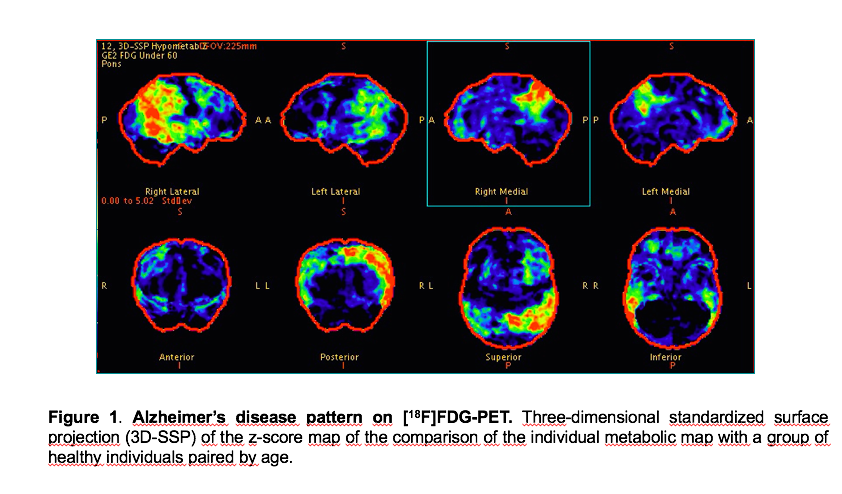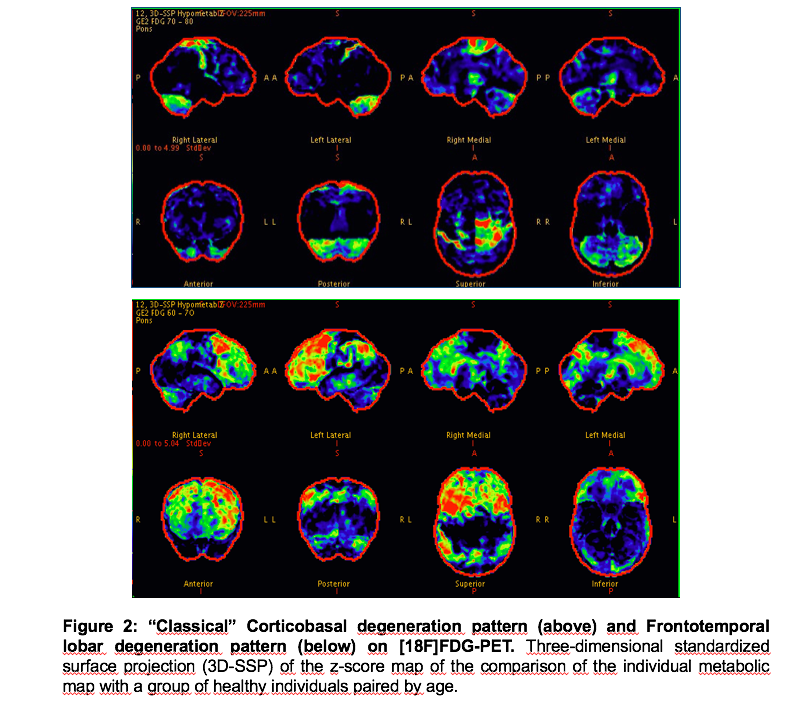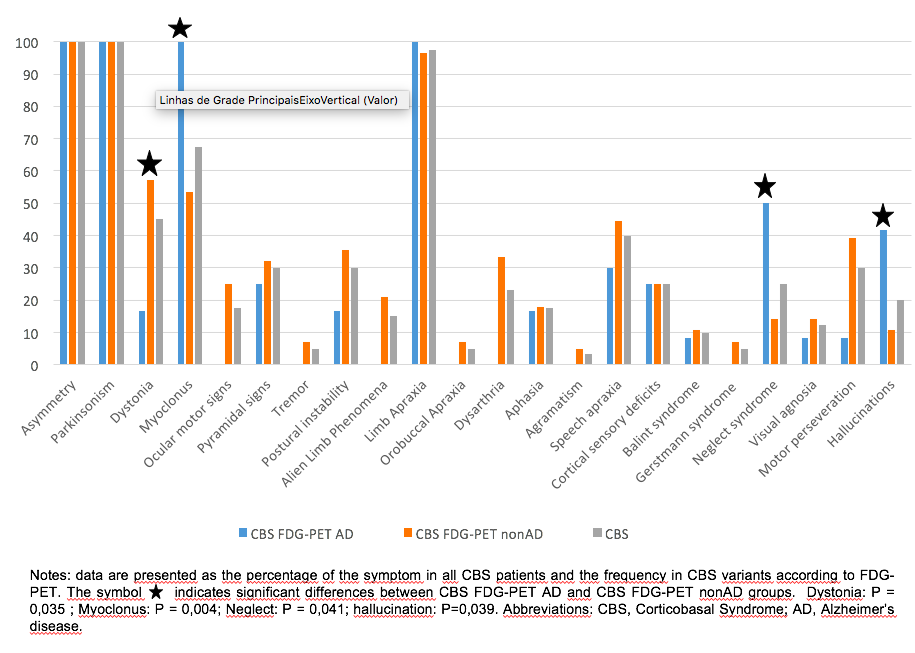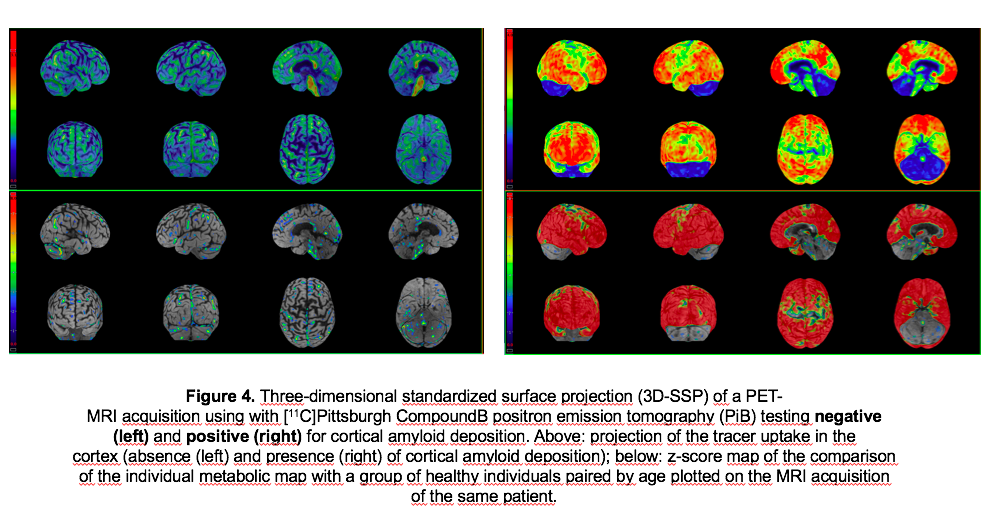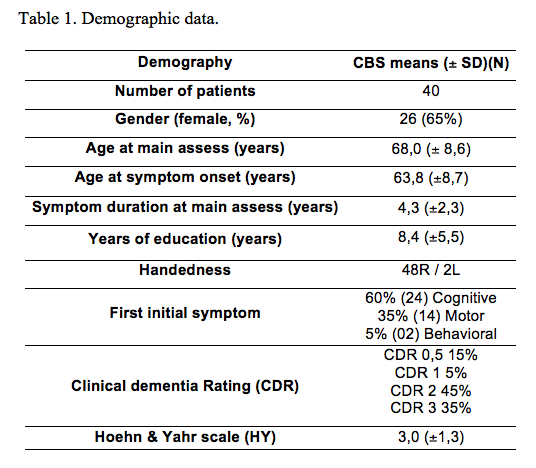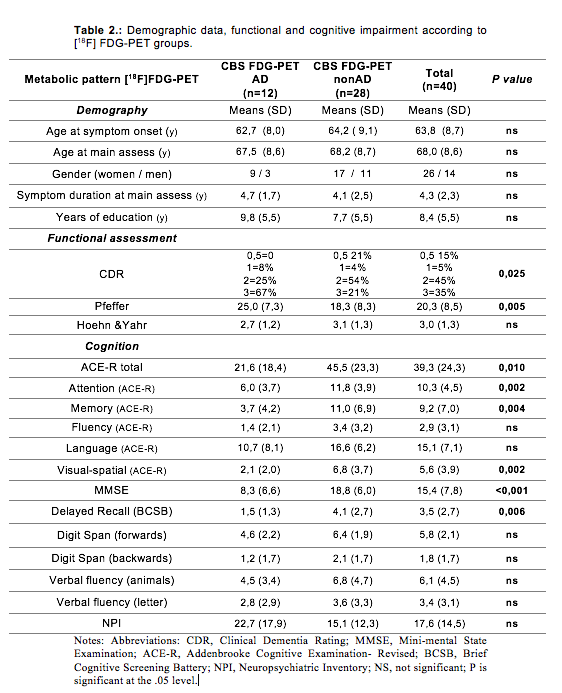Category: Parkinsonism, Atypical: PSP, CBD
Objective: To investigate if an individual clinically-focused analysis of brain FDG-PET metabolic patterns and a comprehensive neurological evaluation could distinguish Corticobasal Syndrome (CBS) pathological variants based on Pittsburgh Compound B(PIB) PET status.
Background: CBS is related to multiple pathologies, including 4-repeat tauopathies (CBD and PSP) and also Alzheimer’s disease (AD). Previous works with post-mortem analysis established FDG-PET patterns closely related to CBD, PSP or AD pathology[1].
Method: Forty patients with probable CBS[2] were evaluated concerning their movement disorders and cognition. They were submitted to FDG-PET and, according to their metabolic patterns, distributed into two groups: likely related to AD (CBS FDG-PET AD) and unrelated to AD (CBS FDG-PET nonAD). Twenty-five patients underwent PIB-PET on a hybrid PET/MRI to assess amyloid status. Both FDG-PET and PIB-PET images were analyzed based on visual and 3D-SSP semi-quantitative parameters. Each examination was blind to other modalities.
Results: Based on the patterns at FDG-PET [figure1,2], we classified 12 patients (30%) as CBS FGD-PET AD and 28(70%) as CBS FDG-PET nonAD. All patients (100%) previously classified as CBS FDG-PET AD tested positive for amyloid deposition at PIB-PET and 88,9% classified as CBS FDG-PET nonAD tested negative (p=0,001 for PIB + status; sensitivity 77,8%; specificity 100%; accuracy 94,44%). There were no significant differences in age, gender, symptoms duration and schooling at FDG-PET groups or PIB status. Functional and cognitive impairment was more severe in the CBS FDG-PET AD group, which had worst scores in memory, attention and visuospatial domains [table 2]. CBS FDG-PET AD group also presented more frequently myoclonus (100% vs. 53,6%, p=0,004), displayed less frequently dystonia (16,7% vs. 57,1%, p=0,035) and had more neglect syndrome (p =0,041) and hallucinations (p=0,039) [figure 3]. Patients with PIB positive status also presented worst cognitive scores on memory and visuospatial domains.
Conclusion: FDG-PET was useful to depict CBS degeneration patterns, being able to detect a CBS-AD group with brain amyloid deposition, worst functional and cognitive decline, also showing high accuracy to exclude AD pathology in the CBS-nonAD group. Motor and cortical symptoms such as dystonia, myoclonus and neglect syndrome might aid biomarkers in distinguishing underlying pathology.
References: 1. Matteo Pardini, Edward D. Huey, Salvatore Spina, et al. FDG-PET patterns associated with underlying pathology in corticobasal syndrome. Neurology 2019;92:1-15. 2. Armstrong MJ, Litvan I, Lang AE, Bak TH, Bhatia KP, Borroni B, et al. Criteria for the diagnosis of corticobasal degeneration.Neurology 2013;80:496–503
To cite this abstract in AMA style:
J. Parmera, A. Coutinho, A. Neto, C. Ono, M. Aranha, C. Buchpiguel, R. Nitrini, E. Barbosa, S. Brucki. FDG-PET degeneration patterns predict amyloid deposition in Corticobasal Syndrome [abstract]. Mov Disord. 2020; 35 (suppl 1). https://www.mdsabstracts.org/abstract/fdg-pet-degeneration-patterns-predict-amyloid-deposition-in-corticobasal-syndrome/. Accessed March 31, 2025.« Back to MDS Virtual Congress 2020
MDS Abstracts - https://www.mdsabstracts.org/abstract/fdg-pet-degeneration-patterns-predict-amyloid-deposition-in-corticobasal-syndrome/

